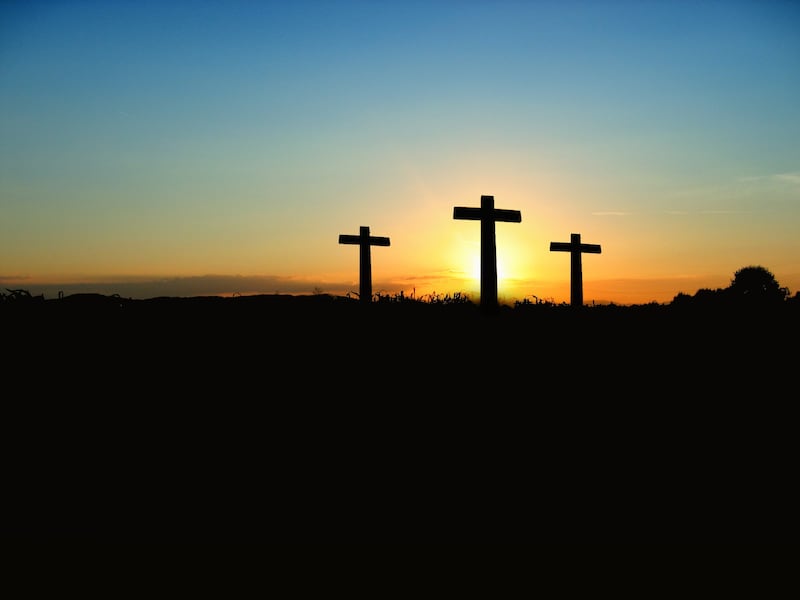I sat alone in the pew during an Ash Wednesday service at a Catholic church in southern Utah. A kind woman sat near me, and we talked after the service concluded. She told me that one of the greatest joys of her life was Starbucks coffee, but for Lent, she was sacrificing the money she would have spent on it in order to help a young single mother in her neighborhood.
Lent inspires small sacrifices like this.
As a Latter-day Saint, I don’t typically do anything for Lent, the six-week observance most often associated with Roman Catholics and Orthodox Christians. But this year, I did, hoping to deepen my faith. The experience exceeded my expectations.
Lent, which means “spring season,” is a sacrificial and contemplative exercise in which some Christians undertake a spiritual journey similar to Jesus’ seclusion and fasting in the desert for 40 days. During Lent, people sacrifice something of value to them and devote extra time to fasting, prayer and almsgiving. For Roman Catholics, Lent ended with Easter on April 17. For Orthodox Christians, whose Easter comes a week later, it ends April 24.
I should admit here that I have holy envy for the liturgical calendar. Ritual and tradition resonate with me deeply. The scent of frankincense transports me to a holier sphere, and knowing that Christians all around the world engage in similar meditative practices fosters a special bond and sense of community.
So to observe Lent this year, I decided to sacrifice time and resources to engage in activities outlined by Jesus in his famous parable in the 25th chapter of the gospel of Matthew.
In that parable, Jesus outlines six responsibilities for those who want to enter God’s kingdom: feeding the hungry, giving drink to the thirsty, welcoming strangers, clothing the naked, looking after the sick and visiting the imprisoned. So each weekday and Saturday of Lent, I resolved to do an activity related to that list. Then on Sunday (which is officially not part of Lent, being a feast day), I would rest from doing that and attend a religious service of a denomination different from mine.
The results, to my mind, were nothing short of miraculous.
One night, I arrived at home after 10 and remembered that I had not yet done my activity that day: feeding the hungry. I deliberated skipping the task since it was late, but felt strongly that I needed to bring a friend cookies. I whipped out my raspberry/white chocolate/macadamia-nut cookie recipe and after baking them, drove to my friend’s apartment, planning to leave the cookies by his door. But when I arrived, I saw him sitting outside. He had a particularly rough day and had felt forgotten by God.
This experience is just one of many that I had as I tried to live a more deliberate Christian life during Lent.
Worshipping with other Christians during Lent also inspired me deeply.
One day I attended a service at a Presbyterian church with a friend. During the service, the pastor asked the congregation to join in communal prayer. As the pastor led the prayer, worshippers voiced their sincerest petitions to God, and heaven felt closer than it had before.
At another service, a priest spoke about how sacrificing our will to God’s means that we have to forsake contention in favor of cultivating unity. He read from Jesus’ parable of the Prodigal Son: “While he was still a long way off, his father caught sight of him and was filled with compassion. He ran to his son, embraced him and kissed him.”
Then the priest quietly said to the congregation: “Go and do likewise.”
It was a holy moment, one of many I experienced during my observance of Lent. Not only was my faith strengthened, but I made genuine friendships by stepping outside the boundaries of my chosen church to worship with the broader Christian community. I was reminded that our deeply held beliefs are often more similar than we think.
On Ash Wednesday, an older woman came up to me after the service. She said she looked much like me when she was younger, and that she was a widow who had never had the children she wanted. In some ways, she said, her life felt like a continual Gethsemane, but that Lent and Holy Week restored light to her life, even if it was fleeting. She put her hand on mine and told me to hold my loved ones close because love is what brings light into the darkness.
As she walked away, I had the distinct impression that she felt inspired to tell me that, just as I’d been inspired to take cookies to my friend.
That’s what Lent can do. In many ways, that’s what Lent is: a voyage through a personal Gethsemane. It can inspire us, humble us and allow us to hear the voice of Christ more clearly, to celebrate his resurrection more joyfully.
The last verse of “He is Risen!” has been the hymn in my heart this season: “He is risen! He is risen! He hath opened heaven’s gate. We are free from sin’s dark prison, Risen to a holier state. And a brighter Easter beam, On our longing eyes shall stream.”
If the dawn has yet to break in your own life and you are in your personal Gethsemane, I can share from personal experience that after the grief of Lent, the Son rises, and aided by the solemn practices of Lent, many of his followers have risen to a holier state. It is, I believe, six weeks well spent, with transformations greater than you might imagine.


 alt=Hanna Seariac
alt=Hanna Seariac